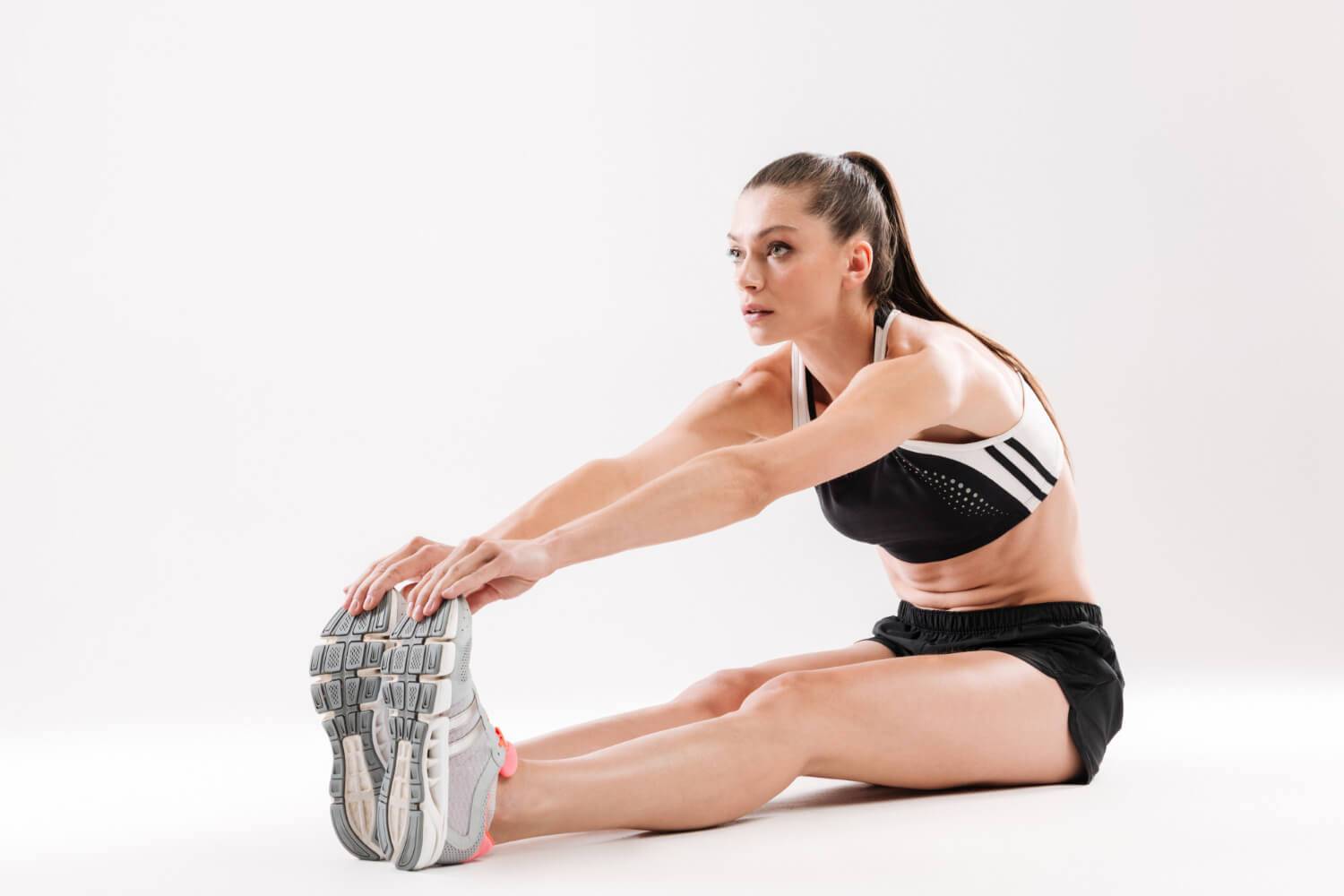Exercises for knee pain that may be caused by osteoarthritis, injuries such as muscle and ligament sprains, tendonitis, bursitis, torn meniscus, broken bones, and muscle imbalances in the surrounding muscles of the knee.
Exercises for knee pain serve to lessen joint pain, build strength, and combat fatigue. Exercises that allow joints to move through their complete range of motion as well as strengthening exercises may be prescribed for those with arthritis. Exercises that stretch joints over their complete range of motion reduce stiffness. Leg muscles with lots of strength can aid in supporting the knees. With less pressure and tension on these joints, pain may be relieved and increased activity may result from this support.
Exercises for knee pain focus on the muscles that support proper knee function and aid in injury prevention, such as the quadriceps, hamstrings, and glutes.
Although it may seem contradictory to exercise an injured or arthritic knee, activity is really better for your knee than sitting inactive. The pain may intensify and it may be more difficult to carry out regular tasks if your knee is stiff from lack of movement.
The American Academy of Orthopaedic Surgeons states that strengthening your knee’s supporting muscles will lessen joint stress. Your knee joint can absorb trauma better due to strong muscles. To regain range of motion and avoid injury, it’s crucial to stretch the muscles you strengthen. After strength training, gentle stretching can help reduce pain and maintain the length and flexibility of your muscles. (1)
The knee muscles can be made stronger with the use of the following exercises.
- Static Quads/ Quad Sets
Sit or lie down on the floor with your legs straight out in front of you. Roll up a towel and place it beneath the affected knee. Press down on the towel as if you were contracting the muscles in the front of your thigh, and straighten your knee without getting it locked backwards. Hold for 10 seconds, then release. Repeat 10 times.
- Short arc quads strengthening
Sit or lie down on the floor with your legs extended in front of you. Place a rolled-up towel or bolster under the affected knee. Pull your toes in towards your body, tense your thigh muscles, and raise your foot till your knee locks straight. Hold for 10 seconds, then release. Repeat 10 times.
- Hamstring Curls
Use either a standing or prone position for this exercise. Bend your knees and bring your heels up to your buttocks. Repeat 10 times. Add an ankle weight to gradually up the resistance as you get better at the exercise. Start with a 5 lb weight and increase the resistance over time, up to a 10 lb weight, by little increments.
- Dynamic Quads Strengthening
Sit upright on the chair. Extend one leg till you feel a stretch at the back of it. Hold for a10 secs then lower your leg slowly. Repeat with each leg 10 times. Add an ankle weight to gradually up the resistance as you get better at the exercise. Start with a 5 lb weight and increase the resistance over time, all the way up to a 10 lb weight.
- Wall Squats
Stand against a wall with the back, hips, shoulders, and head all parallel. Step both feet hip width apart, maintaining the back and shoulders against the wall. Slowly slide your back down the wall until your body is just above a typical sitting position. Hold for 5–10 seconds, then slowly and firmly slide yourself back up with knee strength. 10 times in total.
- Quadricep Stretching
To stay balanced, hold onto a chair’s back or a wall. Bring your heel up toward your buttock while bending your knee. Grasp your ankle with one hand and gradually draw your thigh back and heel closer to your body. Maintain the stretch position for 10 to 30 seconds. Do and repeat the same with the other leg.
- Hamstring Stretching
Lie on your back with your legs bent. Raise one leg off the floor and pull the knee up to your chest. Grab your lower thigh just below your knee with both hands. Once your leg is straight, gradually move it in the direction of your head until you get a stretch. (Wrap a towel around your thigh if you have trouble placing your hands under your leg. Pull your leg closer to you by grabbing the towel’s ends.) Maintain this stretch for 10 to 30 seconds. Do the same with the other leg.
Note: Under your therapist’s guidance, you should complete these exercises to make sure it’s secure and efficient for you.
Must Read >>
- What is the Health Benefits of Ginger.
- What are Generic Medicine: Myths and Facts.
- Exercise During Pregnancy: Do’s and Don’ts
- Breast Cancer Awareness: Its Importance and Benefits
- What are the benefits of coconut water
- Weight loss exercise from home
- Exercises for frozen shoulder at home
- Why is water important to us
- How to stop hair fall in men
- What are symptoms for COPD
- Rich Fiber Diet
- What are the symptoms of asthma
- What are the reasons of neck pain.
- Aceclofenac paracetamol tablet uses
- What are the reasons of neck pain.
- What are the causes of breast cancer
- Exercise of Neck Pain
- Exercise for relieving back pain
- Self-Medication
- Home Remedy of Dry Cough
- What are causes of acidity
- How to reduce belly fat by exercising
- Symptoms for Migraine Headaches
- What Causes Migraine in Females
- How to reduce belly fat by exercising
